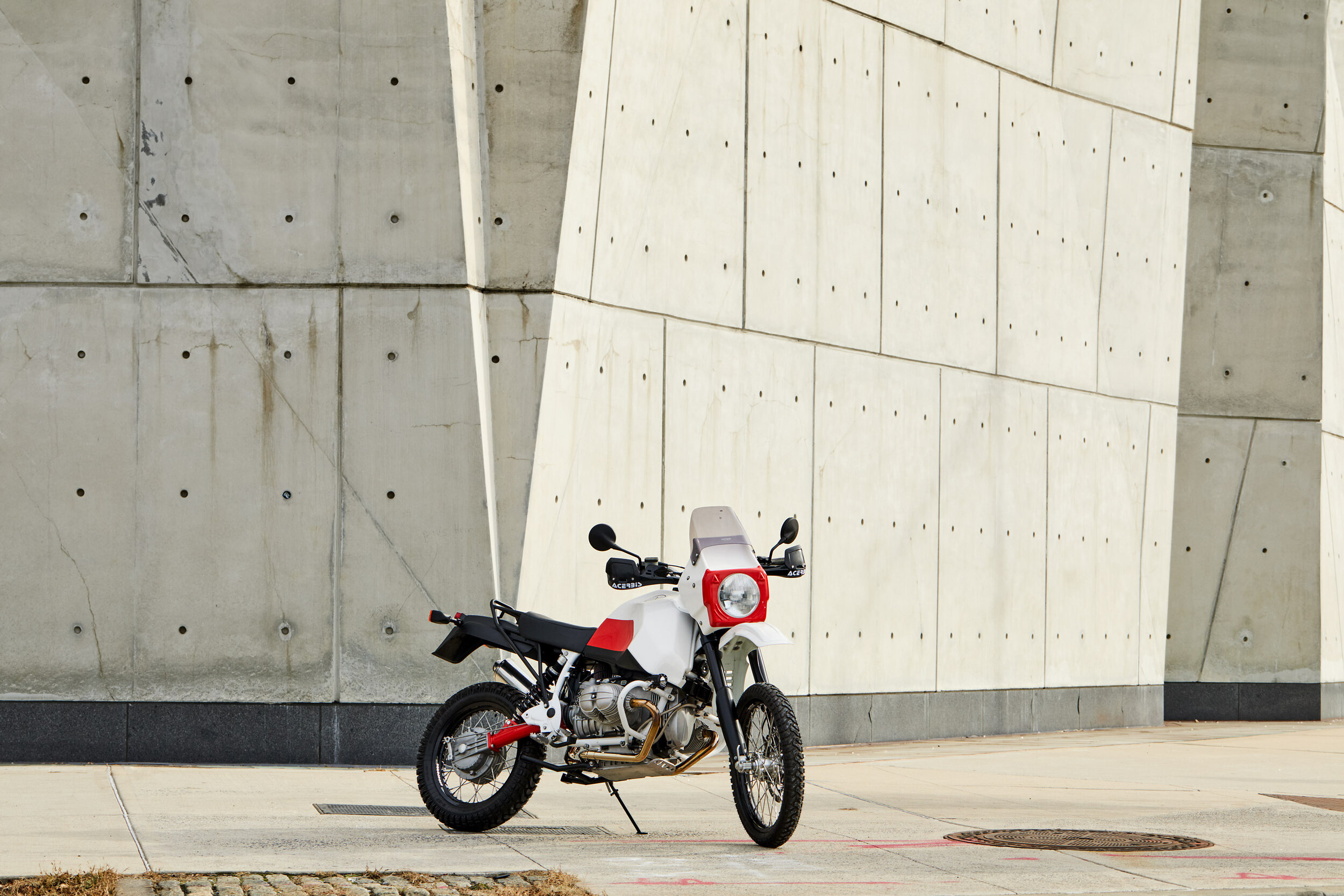
ADVENTURE —
Dry Weight: 382lb / 173kg
Fuel Capacity: 11.3 gal / 43 ltr
Compression: 10:6
Wheelbase: 71.6” / 1.81m
Exhaust: Siebenrock
Forks: 48mm WP Xplor
Rims: Excel Takasago (21/18)
After 168 continuous days on the road, you really get a feel for a motorcycle. With 20,000 miles under my belt on all types of terrains, I vetted every element on the bike for adventure travel.
Weight is paramount, and at only 382lbs (174kg) it’s 167 lbs lighter than the 2021 GSA. The rest of the elements were vetted keeping in mind how easy it would be to repair or replace them in a remote area. The main focus is keeping the simplicity of the airhead systems, but improving suspension, off-road handling, braking power, riding comfort, fuel capacity, top-end power and fuel efficiency.
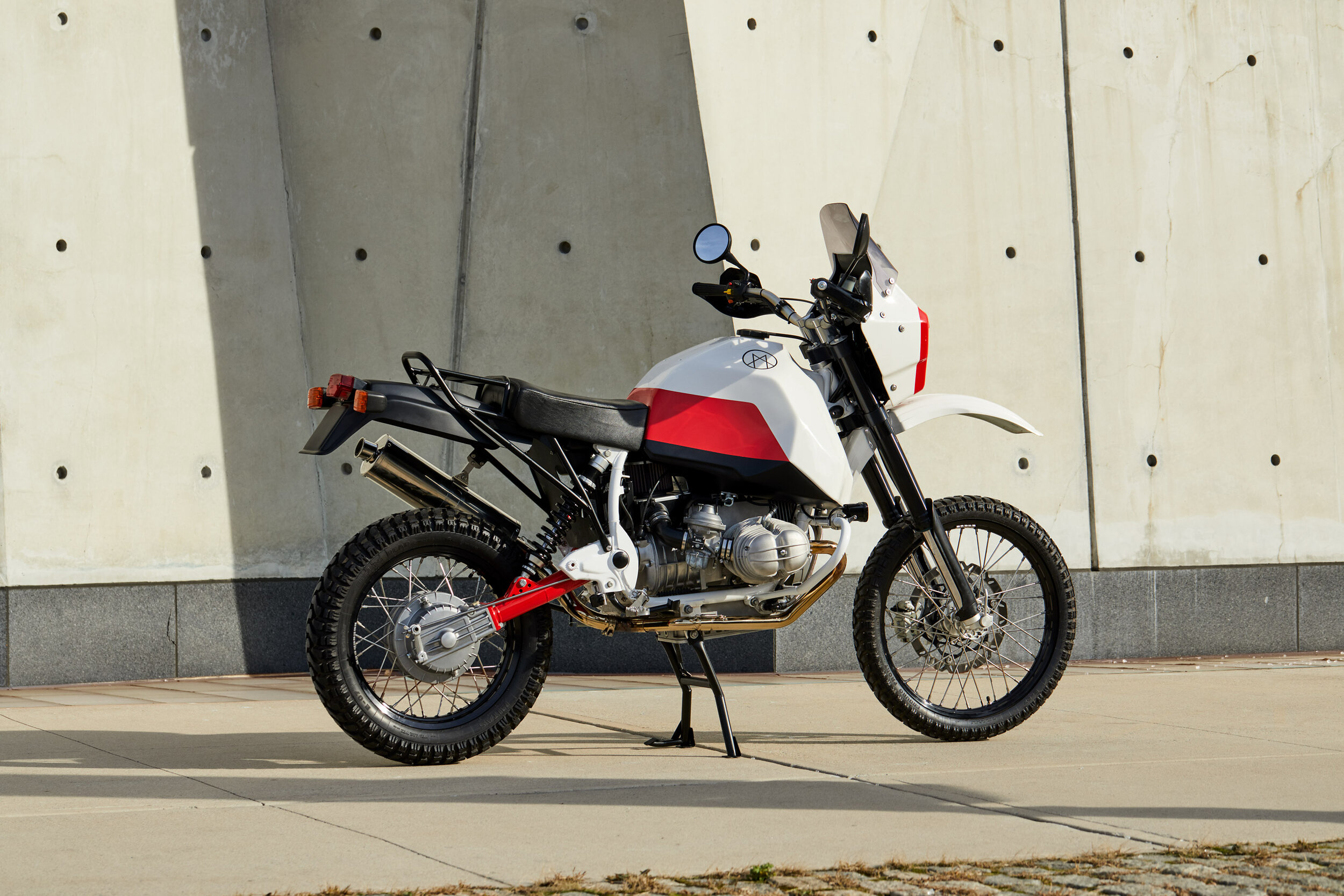
THE ENGINE —
To ensure a reliable and longevity the motor is disassembled and rebuilt from the crank out.
Long journeys require a lot more overtaking than one might want to admit which requires increasing power and torque for comfortable overtaking on a loaded bike, and less engine load at high speeds.
The cylinders are bored out to fit high compression pistons that bring the displacement to 1001cc and 10:6 compression from the stock 9.2:1. The camshaft was upgraded with a 324º racing one. The engine produces 72hp at the rear wheel.
To increase engine flow the heads were ported and the airbox was replaced by an open rally air filter along with a Siebenrock GS2 exhaust.
Crankshaft, conrods, pistons, and flywheel assembly are all dynamically balanced together, making the engine feel smooth and very responsive throughout the powerband.
Increased displacement and flow require 40mm carbs. In my experience Bings are very consistent, fuel-efficient, and fuss-free. These carbs didn’t have a single issue in 168 days on the road to Ushuaia, and for a touring machine, this balance between performance and efficiency is crucial.
COOLING —
Oil coolers are not always necessary on airheads, but for a place like Africa with extreme temperatures, cooling the motor is primordial.
• Rally oil pan ring
• SH Thermostat
• Higher flow oil lines
• High capacity oil cooler
• 8mm thick bash plate
The main issue with the G/S seats is that the rack is built into the seat which means you need to unload your duffle to access your tool tray. We created a built-in rack that removes this issue and reinforces the subframe structure.
Two diagonal supports are added for extra rigidity and longevity. The rear fender is a modified version of the HPN Baja fender which still uses the original turn signals and taillight that plugs directly into the main harness.
FUEL CAPACITY —
Fuel capacity is crucial when overlading in isolated areas. For this specific Africa journey, we picked a massive but light 11.3gal (43ltr) nylon tank from HPN. The same that was on the BMW Dakar bikes in the mid-’80s. We left a stripe unpainted to function as an analog fuel gauge.
IGNITION —
Riding through more isolated areas means that low-quality fuel is a given. The poor combustion quality of the fuel can create ‘pinging’ which is dangerous for the motor. To circumvent the issue the bike has a dual curve ignition system that can be switched from the dash to adjust the timing.
COCKPIT —
The goal of the dash design was to make it easy to read and operate while riding with gloves on.
Our dashboard reuses the R80ST gauges, but we added a dual-port marine USB hub, a hazard light switch, and a switch for the ignition’s second curve.
LIGHTING —
The stock 1980’s H4 was upgraded with a low consumption high output self-cooling LED bulb.
Even though you try to never ride at night, sometimes you just have no choice. We picked the Baja Design S1. The S1 utilizes a highly specialized reflector and LED combination. With the 2.1" length, width, and height it’s perfect to mount on the crash bars. The housing is cast aluminum and has been hard anodized & powder coated. With a single LED bulb this tiny light output 2375 lumens each, they are water and shock proof and very light.
REAR DRIVE —
To keep the geometry intact the swingarm was elongated 100mm, and a custom-length Wilbers shock was fitted increasing the rear travel.
The final drive was completely overhauled with new bearings and the rear brake inverted to mitigate damage on rocky roads.
The transmission was completely rebuilt. A longer 5th gear was swapped for better fuel mileage and less load at higher speeds.
The rear 18” Excel Takasago rim was laced with heavy-duty spokes which require drilling of the BMW hub. For better off-road performance but very capable on a pavement we chose a 130 Mitas E-07. The slight offset of the rim lacing allows the rider to fit up to a 140 tire.
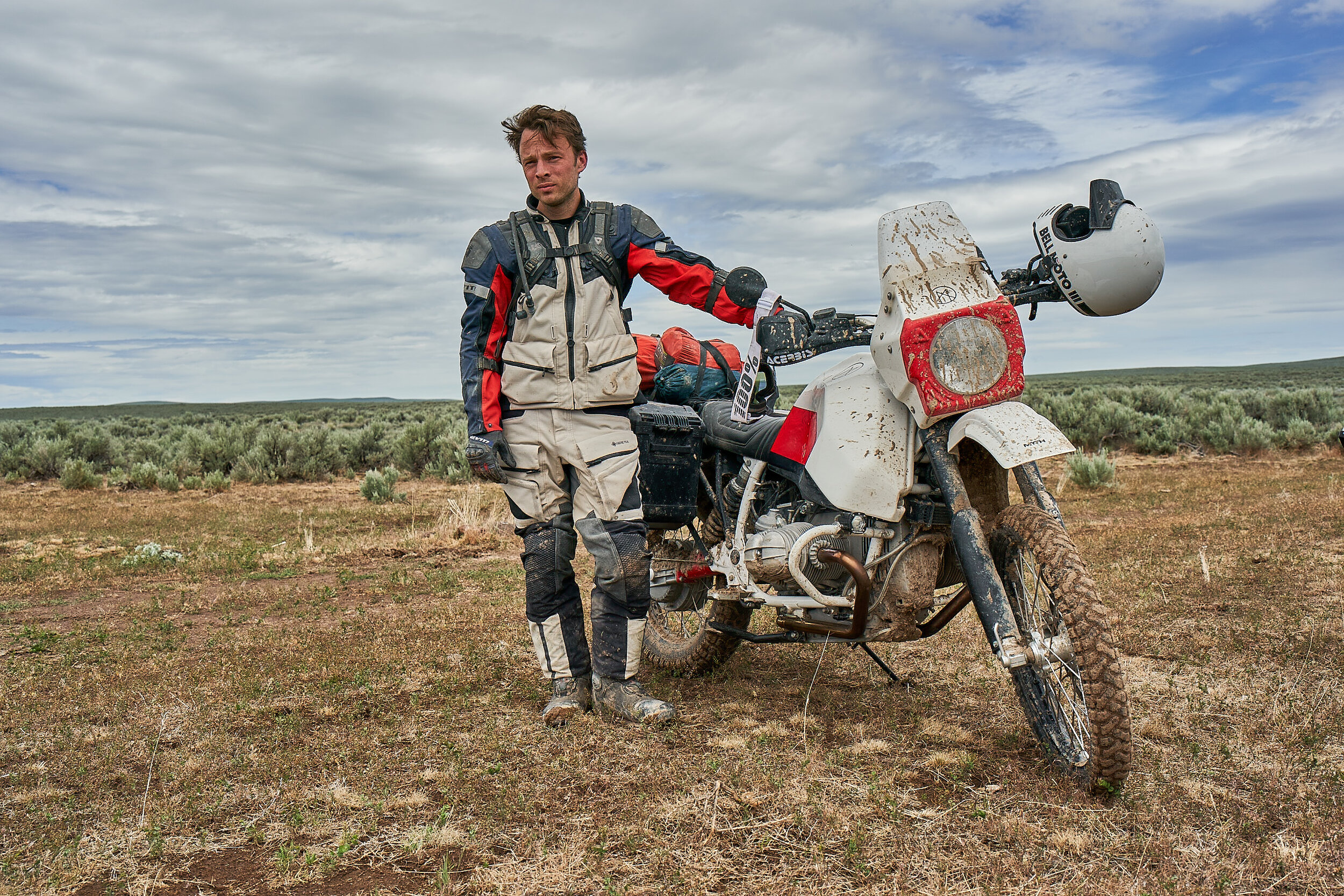
@ Gregor Halenda
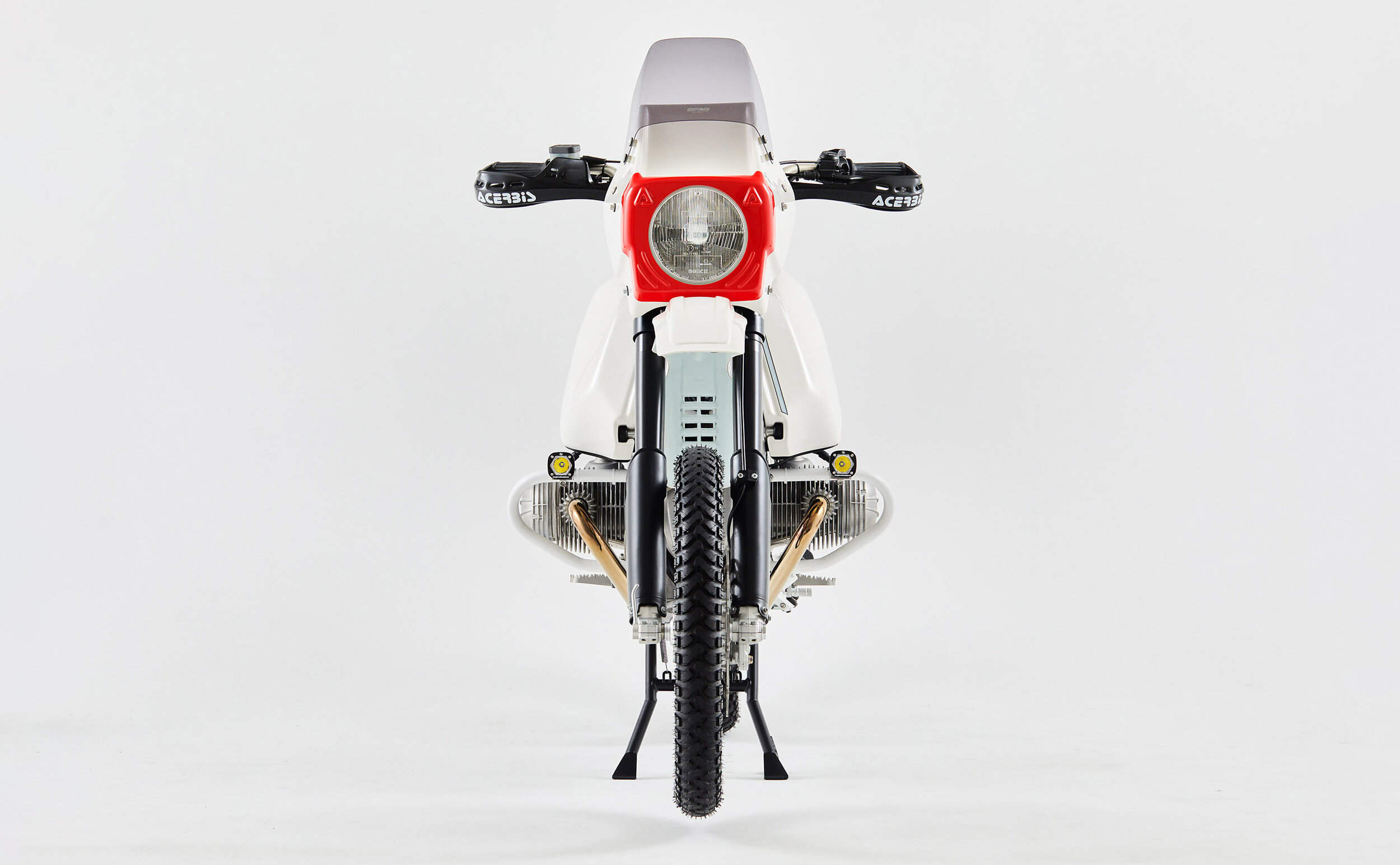
FRONT END —
The stock 1980’s front end has obvious limitations when it comes to off-roading on a loaded bike. It’s solid on paved roads but in off-road situations, its responsiveness and travel can be improved.
The bike comes with a set of WP open chamber forks with 250mm of travel which can go up to 275 and 300mm for more aggressive (and taller) off-road riders.
The front wheel is a 21” Takasago Excel rim, on a Talon aluminum hub and heavy-duty stainless spokes. To improve the brake feel and increase stopping power we fit a 320mm rotor with a 2 piston Brembo caliper.
The center stand was modified to accommodate the taller suspension and its stance widened for stability. A foot lever was added to aid lifting a loaded bike.
LUGGAGE —
We chose the same system I carried for South America. We stuck with Hepco Becker because not only is it one of the most solid rack systems but also has a wide range of choices for all types of luggage setups. We went with the 30 and 40 liters Alu-case Xplorer.
In my experience, these are robust, easy to install, and remove from the bike and sit higher than some more vertical designs. A set of these cases and the built-in luggage rack for a duffle bag is all I would ever need for Overlanding.

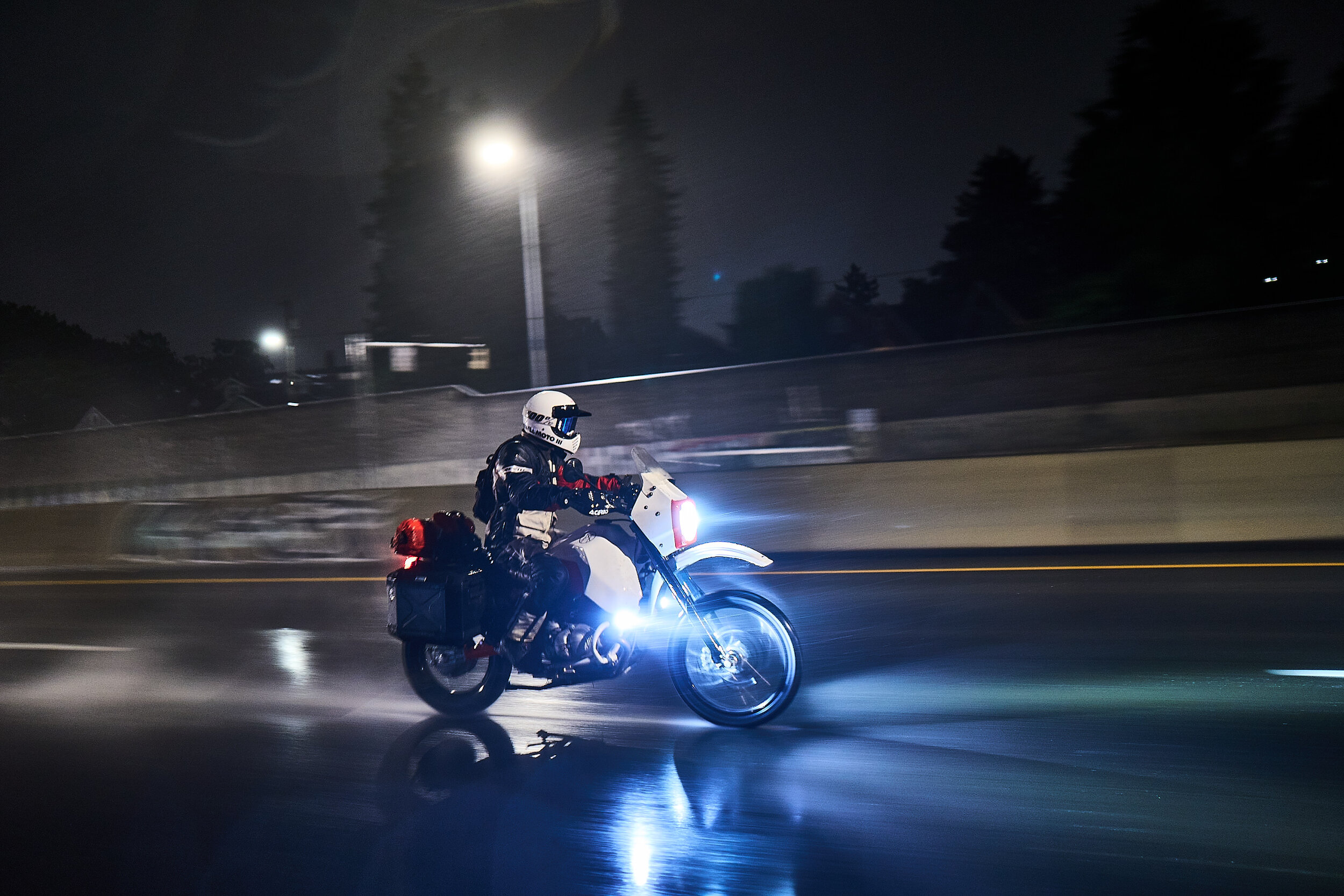
@ Gregor Halenda
